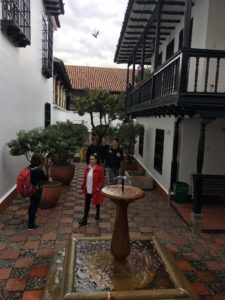 I didn’t want to make the same mistake in Bogotá that I did in Mexico City—namely, waiting until my last week to try to cram in all the local tours. So I signed up for the free walking tour of the historic district, La Candelaria, the very first week I was here.
I didn’t want to make the same mistake in Bogotá that I did in Mexico City—namely, waiting until my last week to try to cram in all the local tours. So I signed up for the free walking tour of the historic district, La Candelaria, the very first week I was here.
The walking tour covered both older and more recent Colombian history, including a few basics about the emerald trade, the FARC war, the Colombian revolution (which led to Colombia’s independence from Spain), and even the local beer wars that started back in the early 1900s and are still brewing (haha, sorry…) today.
But the tour wasn’t all talk—we sampled a local beverage called chucula. Chucula was developed when the price of cocoa began to skyrocket in the region. It’s basically a chocolate replacement, a mix of various spices and just a couple of cacao beans, rolled into tight-packed balls that you can dissolve into hot cups of water or milk to create a hot chocolate-esque beverage. I liked it even more than hot chocolate, because it still had a hint of chocolate-y flavor without being overwhelmingly sweet or rich. But that could just be my taste buds!
After the chucula, we also tried chicha, a traditional corn beer that tastes (to me, anyway) like a cross between sour beer and cider. I enjoyed it, though I think it would be hard to drink more than a pint of it, since it’s pretty sour.
Chicha used to be crazy popular in Bogotá until the Bavarians rolled into town and started an ad campaign to demonize the drinking of chicha. All so they could run it out of business and fill the resulting gap with their own beer, naturally!
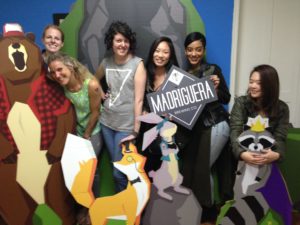 That was my first introduction to the beer wars here, but it wouldn’t be the last. Later in the week, I went on the Bogotá Craft Beer Tour, which took us from a small microbrewery in La Candelaria out through the other neighborhoods, stopping at a tiny brewery called Madriguera located in what looked like someone’s renovated house, another bar built by a brother-and-sister brewer-and-architect duo, and to eat and drink at a delicious local restaurant, Cervecería Gigante.
That was my first introduction to the beer wars here, but it wouldn’t be the last. Later in the week, I went on the Bogotá Craft Beer Tour, which took us from a small microbrewery in La Candelaria out through the other neighborhoods, stopping at a tiny brewery called Madriguera located in what looked like someone’s renovated house, another bar built by a brother-and-sister brewer-and-architect duo, and to eat and drink at a delicious local restaurant, Cervecería Gigante.
Along the way, our guide talked about the pushback these local microbrewers have encountered as they get started here in Bogotá. It’s difficult to break into a market dominated by Bavaria, a Colombian beer company owned by Anheuser-Busch. 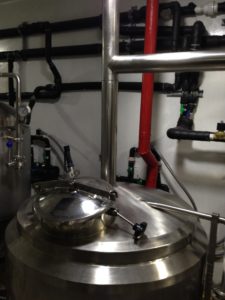 Local, small-batch brewers are still fighting same battles that chicha ran into over a century ago—being stigmatized and out-campaigned in a tough market. But there’s a growing resistance to bigger beer companies here, and a push toward drinking locally made microbrews, which will hopefully only continue to grow in the future.
Local, small-batch brewers are still fighting same battles that chicha ran into over a century ago—being stigmatized and out-campaigned in a tough market. But there’s a growing resistance to bigger beer companies here, and a push toward drinking locally made microbrews, which will hopefully only continue to grow in the future.
On another downtown walking tour through La Candelaria, I learned more about the other battles that have been fought (and are still being fought) on Colombian turf. Bogotá has some of the most beautiful and varied street art I’ve ever seen, and the graffiti tour walks you past some of the best examples of work in different styles. But the guides also talk a lot about the politics of street art here—the violence and wars the art depicts and protests, as well as the current move by the government to promote street art (and in doing so, cut down on unauthorized graffiti tagging).
It was a fascinating tour, all in all, but it didn’t even come close to walking us past all the art La Candelaria and the surrounding neighborhoods have to offer. There’s now even a panel of art in Palermo created by some other members of my Remote Year group (Meraki pride, woo!).
Venturing a little ways outside of Bogotá itself, I visited the two salt mines nearby: Nemocón and the better-known Salt Cathedral of Zipaquirá. If you want my advice, I’d say first of all, don’t visit both—that was a pretty repetitive exercise!
 Personally, I preferred Nemocón. It’s a bit smaller, and you can still find the actual salt in the mines. Not to mention carvings made in said salt, a lickable wall, natural deposits that people imagine depict nativity scenes or trees, a massive salt pond mirror that’s so convincingly reflective that standing next to it feels like you’re about to plunge off a ledge, and of course, Salt Jesus.
Personally, I preferred Nemocón. It’s a bit smaller, and you can still find the actual salt in the mines. Not to mention carvings made in said salt, a lickable wall, natural deposits that people imagine depict nativity scenes or trees, a massive salt pond mirror that’s so convincingly reflective that standing next to it feels like you’re about to plunge off a ledge, and of course, Salt Jesus.
Fun fact, Nemocón was also the location where The 33 (that movie about the trapped Chilean miners) was filmed. You can explore the set and imagine just how claustrophobic it must have felt to be those guys.
Zipaquirá, on the other hand, was much larger, but also way more touristy. The Salt Cathedral itself is lovely, but left me wondering where all the salt was (the sculptures inside are either carved from rock or marble). Plus, the mall tacked onto the outside is just strange. Unless you’re shopping for some tourist emeralds, then I guess it’s a good stop 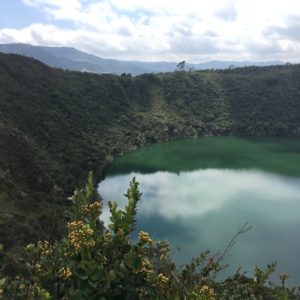 to make.
to make.
The last tour I did, which I actually went on a couple weeks later, but I’ll include it here for good measure, was to Lake Guatavita. Best known as the origin of the myth of El Dorado, our local guide explained Guatavita as the Muisca’s version of the Aztec temples. The Muisca people worshipped the moon here, so it made sense that rather than building grand temples to try and reach the sky, they would make a sacred space of a deep, nearly perfectly circular lagoon instead.
Many sacred lakes dot the hillsides in this region, but Guatavita is the largest and best-known. It was here that future tribal rulers were crowned—though not until they had undergone extensive trials to judge their worth, including living for 9 years in total darkness within a cave (a year for every month their mothers carried them to symbolize their gestation and rebirth) and exiting naked to a ritual where nude women danced around them, trying to seduce them. If they reacted at all (yes, you know what I mean), they were deemed unfit to rule.
But, our guide assured us, every ruler who reached that phase of the trial passed. They were then covered head-to-toe in gold dust, and swam out to the center of Lake Guatavita in the final ceremony.
All in all, there are a plethora of tours both within Bogotá’s city limits and outside it. If you’re ever in the city, I’d recommend deciding what parts of local history call to you, and checking out the tours that cover those topics!
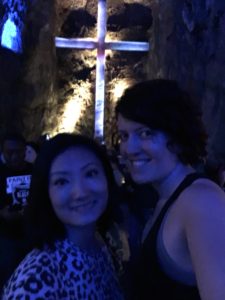
Ellens in the Salt Cathedral

Yes, I licked this wall
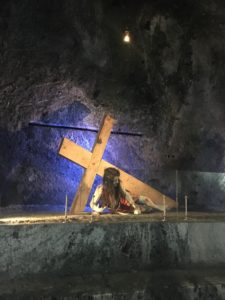
Salt Jesus
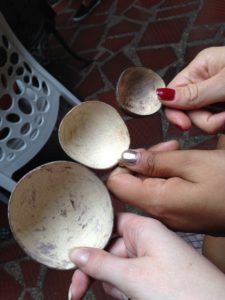
Chicha cups
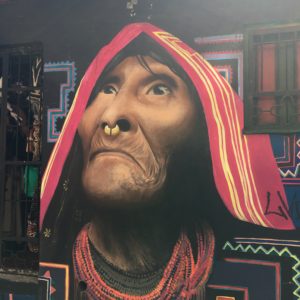
Street art in Candelaria
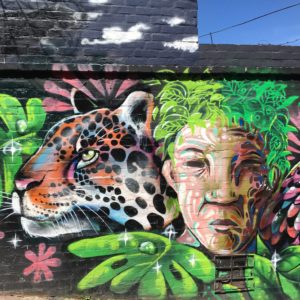
More street art
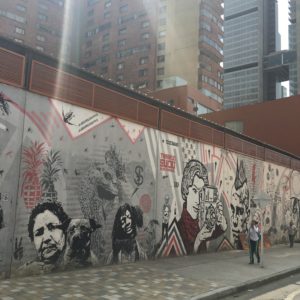
Political commentary via street art
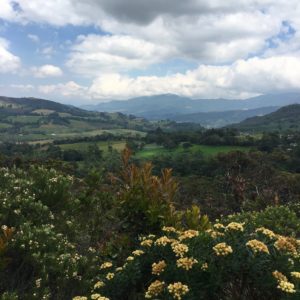
View from the hike up to Guatavita




How DARE those Bavarians?!?! What do they know about epic beer?!? >.>
It was secretly you, wasn’t it?! 😛